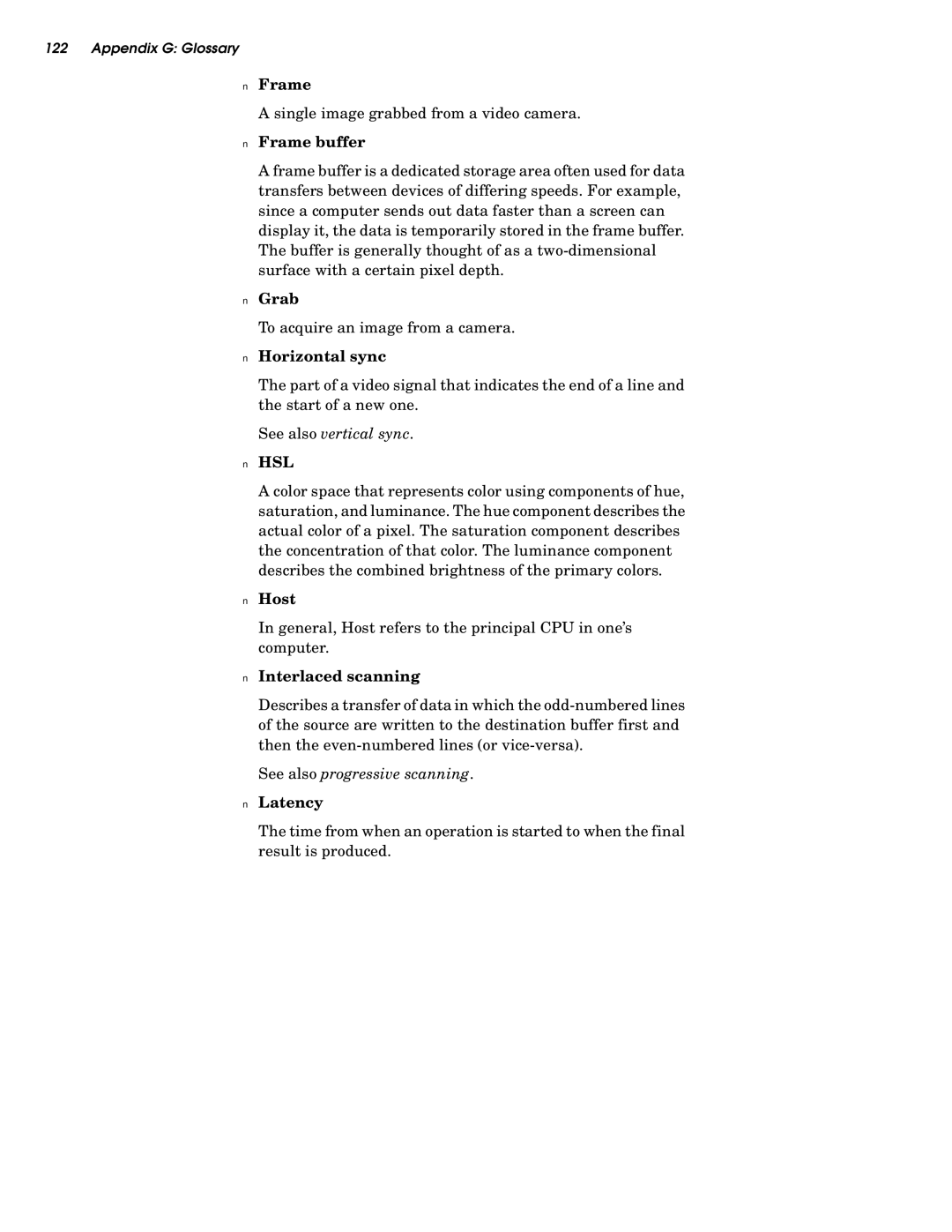122 Appendix G: Glossary
■Frame
A single image grabbed from a video camera.
■Frame buffer
A frame buffer is a dedicated storage area often used for data transfers between devices of differing speeds. For example, since a computer sends out data faster than a screen can display it, the data is temporarily stored in the frame buffer. The buffer is generally thought of as a
■Grab
To acquire an image from a camera.
■Horizontal sync
The part of a video signal that indicates the end of a line and the start of a new one.
See also vertical sync.
■HSL
A color space that represents color using components of hue, saturation, and luminance. The hue component describes the actual color of a pixel. The saturation component describes the concentration of that color. The luminance component describes the combined brightness of the primary colors.
■Host
In general, Host refers to the principal CPU in one’s computer.
■Interlaced scanning
Describes a transfer of data in which the
See also progressive scanning.
■Latency
The time from when an operation is started to when the final result is produced.
